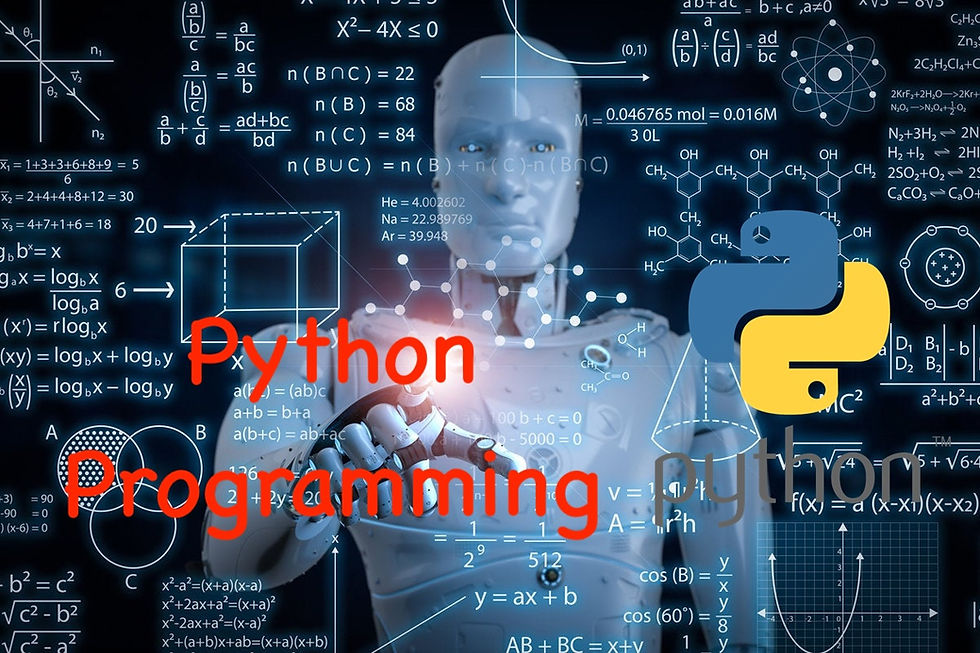Part 2: Why Python is the Ultimate Language for Machine Learning
- Revanth Reddy Tondapu
- Jun 2, 2024
- 3 min read

Hello everyone! Today, we are going to explore why Python is considered the best programming language for machine learning. Let’s jump right in and uncover the magic behind Python’s popularity in the world of machine learning!
Why is Python So Popular for Machine Learning?
Over the past few years, Python has become incredibly popular for machine learning. But why is that? Let's understand the four main reasons why Python is the go-to language for machine learning.
1. Python is Very Easy to Use
One of the biggest reasons Python is so popular is because it is easy to use. The syntax of Python is simple and straightforward, which makes it easy to learn, even if you are new to programming.
Think of Python like building with LEGO blocks. Each block (or line of code) fits together in an intuitive way, allowing you to build complex structures easily. Here’s a simple example:
# Adding two numbers in Python
a = 5
b = 3
sum = a + b
print("The sum is", sum)With just a few lines of code, we added two numbers and printed the result. This simplicity allows developers to focus more on solving problems rather than getting bogged down by complex syntax.
2. Python Has Multiple Libraries and Frameworks
Python has a rich ecosystem of libraries and frameworks that make it powerful for machine learning. Libraries are like pre-built tools that you can use to perform common tasks. Here are some essential ones:
NumPy: Helps with numerical operations and handling multi-dimensional arrays.
Pandas: Useful for data manipulation and analysis.
Scikit-Learn: Contains many machine learning algorithms.
Matplotlib and Seaborn: Used for data visualization.
Let’s look at an example of using these libraries:
import numpy as np
import pandas as pd
import matplotlib.pyplot as plt
# Creating a simple dataset
data = {'Hours': [1, 2, 3, 4, 5], 'Scores': [1, 4, 9, 16, 25]}
df = pd.DataFrame(data)
# Plotting the data
plt.scatter(df['Hours'], df['Scores'])
plt.xlabel('Hours Studied')
plt.ylabel('Scores')
plt.title('Hours vs Scores')
plt.show()In just a few lines, we created a dataset, visualized it, and set the stage for a machine learning model.
3. Strong Community and Corporate Support
Python has a huge, active community. This means there are plenty of resources available online, from forums and tutorials to extensive documentation. If you ever get stuck, help is just a search away.
Moreover, many big companies use Python for their machine learning projects. Here are a few examples:
Voice Assistants: Like the ones that help you with questions and tasks.
Recommendation Systems: That suggest movies or products you might like.
Social Media: For friend recommendations and content personalization.
This community and corporate backing make Python a reliable and attractive choice for machine learning.
4. Versatile and Multi-Purpose
Python is not just limited to machine learning. It’s a versatile language used for web development, automation, data analysis, and more. This makes Python a valuable skill as it opens up many opportunities.
For instance, you can use Python for web scraping, which means extracting data from websites. Here’s a simple example using the BeautifulSoup library:
from bs4 import BeautifulSoup
import requests
# Fetching the content from a webpage
url = 'http://example.com'
response = requests.get(url)
soup = BeautifulSoup(response.text, 'html.parser')
# Extracting and printing the title of the webpage
title = soup.title.string
print("Title of the webpage:", title)With Python, you can easily transition from building machine learning models to developing web applications, automating tasks, and more.
Conclusion
In summary, Python’s simplicity, extensive libraries, strong community support, and versatility make it the best programming language for machine learning. Its ease of use allows you to focus more on solving problems rather than worrying about complex syntax, and its rich ecosystem of libraries accelerates the development process.
If you’re interested in machine learning, Python is undoubtedly a great choice to start with. Happy coding, and stay tuned for more exciting content!
Thank you for reading! If you found this post helpful, please share it with your friends and family. Happy learning!
Comentarios